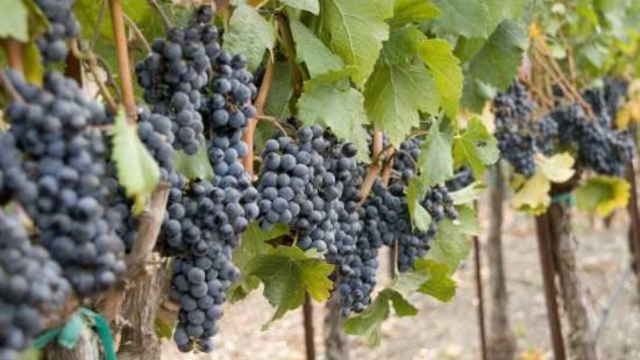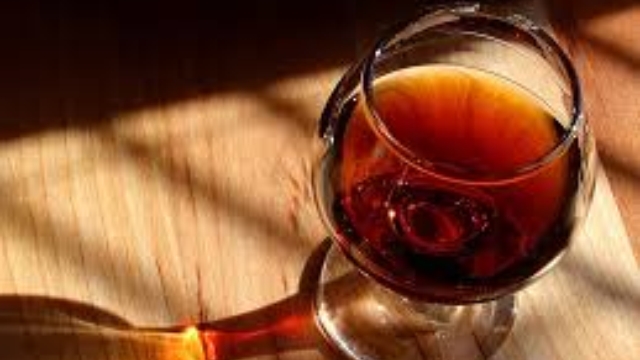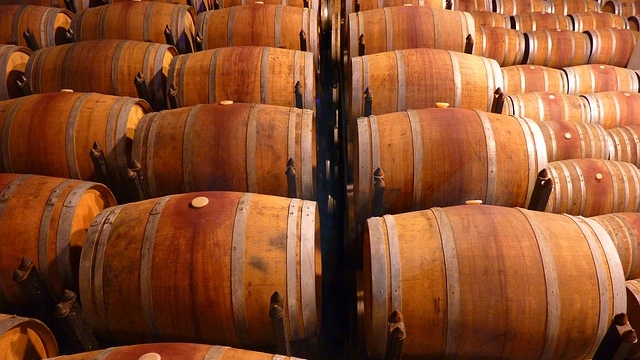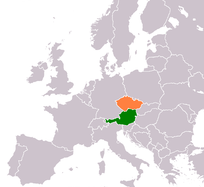That Useful Wine Site
Search, or just roll your cursor over the colored boxes farther below.click the “x” to dismiss Search-results block.




Advertisement:
Advertisement:
Quick page jumps:
(Synonyms: Laurenzitraube, Lorenztraube, Saint-Laurent, Saint-Lorentz, Sankt Laurent, Schwarzer, Svatovavřinecké, Svätovavrinecké, Vavřinecké)

St. Laurent is a red-wine grape believed to have arisen in Austria; some, however, argue that it arose in Bordeaux, then migrated through Alsace and Germany to centeral Europe, its current home, where it is today grown in significant quantities in Austria and its neighbor to the north, the Czech Republic. It is not yet well known outside those regions, but is generally considered one of the dozen and a half or so of world-class red-wine grapes.
The grape is generally thought to be an offspring of Pinot Noir (with the other parent yet unknown), with which it shares many characteristics—indeed, it is often bottled as a blend with Pinot Noir. Broadly speaking, one might say that St. Laurent is a slightly more robust and slightly less subtle wine than Pinot Noir, tending toward wines of strength rather than PN’s delicacy; but it is not unknown for even experts to occasionally confound the two types.
Austria (much like Switzerland in this respect) makes many good to excellent wines rarely seen outside its borders, because their producion and consumption are nearly equal; only quite recently has there been much interest in exporting their wines. Thus, St. Laurent wines are still rather scarce in the U.S., which is rather a shame. (Incidentally, Austria also produces some fine Pinot Noirs.)
St. Laurent wines tend to be strong on dark fruit flavors (especially cherry), with pronounced but soft tannins and good, acid-balanced structure. There is a modern tendency to heavy use of oak in vinifying St. Laurent, though many winemakers think it an ill idea.
Factoid: St. Laurent is one of the parents (along with Blaufräankisch, aka Lemberger) of the now-popular variety Zweigelt.
There are several St. Laurent wines available in the U.S., but almost all have quite scant availability. The short list below is about what there is; if, however, you run across a bottle of St. Laurent not mentioned here, you might give it a try.
• This wine’s Wine Searcher “Reviews” page.
• This wine’s CellarTracker review pages.
• Retail offers of this wine listed by Wine Searcher.
• Retail offers of this wine listed by 1000 Corks.
• This wine’s Wine Searcher “Reviews” page.
• This wine’s CellarTracker review pages.
• Retail offers of this wine listed by Wine Searcher.
• Retail offers of this wine listed by 1000 Corks.
There are no St. Laurent wines with reasonable availability in the U.S. that are enough better than those listed above to justify a “splurge” price.
Advertisement:
Advertisement:
|
|
This site is one of The Owlcroft Company family of web sites. Please click on the link (or the owl) to see a menu of our other diverse user-friendly, helpful sites. |
|
| (Note: All Owlcroft systems run on Ubuntu Linux and we heartily recommend it to everyone—click on the link for more information). | ||
|
All content copyright © 2024 The Owlcroft Company
(excepting quoted material, which is believed to be Fair Use). |
This web page is strictly compliant with the W3C (World Wide Web Consortium) Extensible HyperText Markup Language (XHTML) Protocol v1.0 (Transitional) and the W3C Cascading Style Sheets (CSS) Protocol v3 — because we care about interoperability. Click on the logos below to test us!
This page was last modified on Saturday, 30 October 2021, at 11:26 pm Pacific Time.
Some Descriptions of St. Laurent Wines
“The St. Laurent sports juicy berries, velvety tannins and it is often quite mouth-filling. Its color leans towards a deep, dark red. St. Laurent wines tend to be fruity and multi-layered, and with just a little bit of age, a St. Laurent wine can develop an exceptionally smooth texture. However, it is the wine’s bright sour-cherry aromas and flavors, which are typically offset by subtle tartness, that has its fans raving.”
“St. Laurent is a grape that is full of prounounced dark fruits such as black berries, sour cherries and prune complimented by beet root and dark chocolate notes. The wines this grape produces are velvety with subtle tannins. The grape is quite similar to Pinot Noir as Pinot Noir is one of it’s parents (the other is unknown.)”
“Wines of St. Laurent show dark-red colour, sometimes with violet reflections. On the nose, enthusiasts should expect ripe cherry, black current, and even oak characteristics (like chocolate, vanilla or cedar shavings, assuming it’s oaked). The tannins with St. Laurent can be all over the map. If it’s harvested early, the wine will show more like a Pinot Noir, with light tannins and tastes more on the cranberry side of the fruit profile. If harvested later or during a warmer summer, tannins will be more developed and may even come off as boxy and tight. Young wines tend to have relatively high acidity levels. They make a good match with red meat and strongly flavoured cheeses. We also find that St. Laurent…goes with a wide array of most meats ‘less than red meat’, including wild game, comfort foods and any meat that is rich with fat and flavour profiles…St. Laurent wines are of medium to full body. After aging in bottle, the aggressive character will change into crispness and then finally into a velvety smoothness.”
“Saint-Laurent wines tend to be dark purple in color, structured yet silky with a characteristic dark-cherry flavor (similar to Pinot Noir). Blackberries, smoke and spice are also commonly exhibited. The wines benefit from oak aging and show good aging ability.”
“Therry Theise, in one of his wine catalogs, describes St. Laurent as ‘Pinot Noir with a sauvage touch’, and John Schriener writes that ‘it comes across as a Pinot Noir wearing hiking boots’, both of which pretty much sum up my feeling on the wine as well. I had actually written in my notes that the wine was like a brooding, meaty Pinot Noir but denser and darker. For fans of gamier, meatier Pinot Noirs, St. Laurent is a can’t miss, especially considering the price that most of them sell for. ”
“St. Laurent delivers dark, sturdy and fruity red wines with morello cherry notes. They are of high quality and have good ageability. ”
“St. Laurent is one of the most fascinating and valuable red wine varieties because it is capable of uniting the power and spice that one would expect of the Rhone with the elegance and delicacy of Burgundy. These attributes in combination with the climatic and geological preconditions in Austria result in unique, elegant and inimitable wines that demonstrate all the virtues of the variety and terroir." [It is well worth reading this entire long article on St. Laurent wines.]
“If you could cross, in your mouth and on your palate, both pinot noir and syrah, you’d have a good approximation of the aromas, flavors and texture of Austrian wine made from the grape St. Laurent. . . Its thick skins give St. Laurent red wines good depth of color and they finish with a tangy, clipped zing — a nice foil for many a food. Another red wine that it resembles, especially at table, is Piedmont’s barbera.”